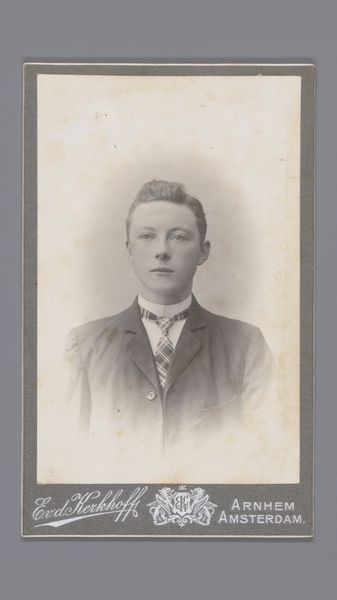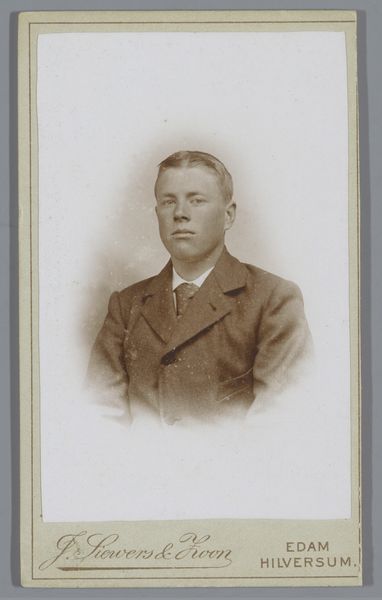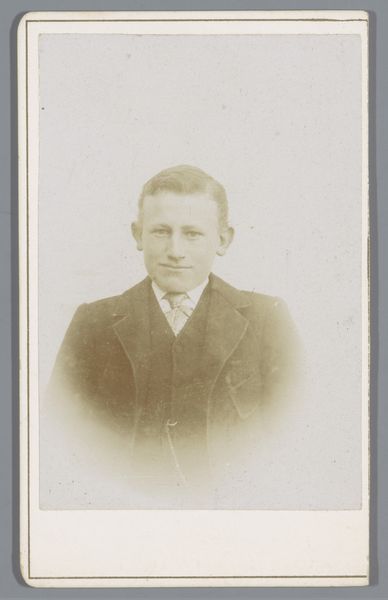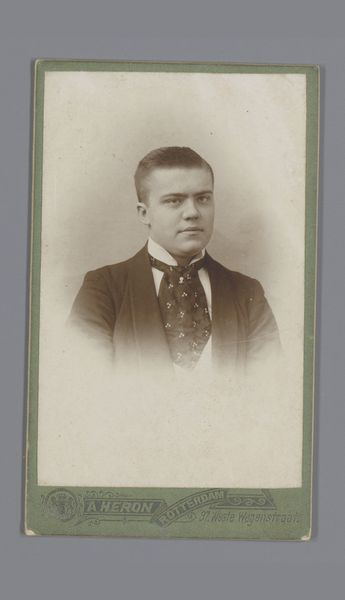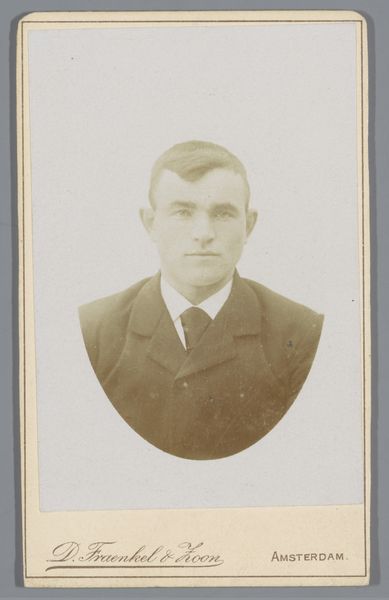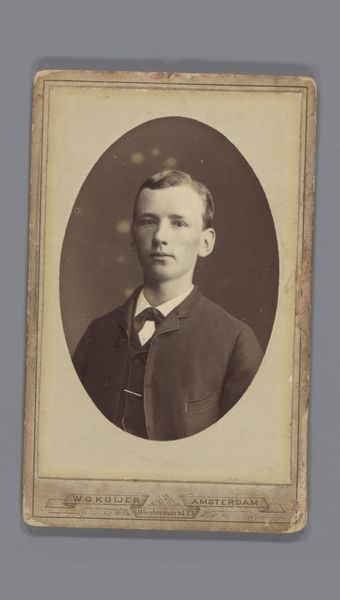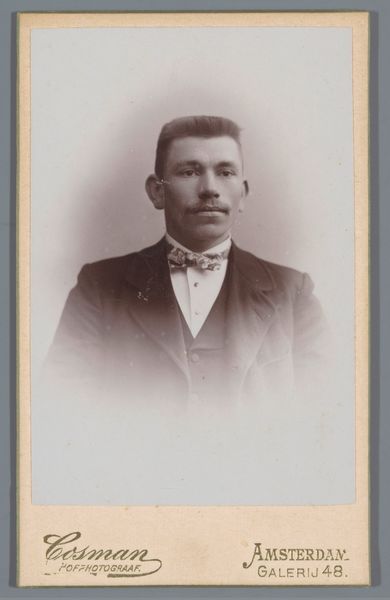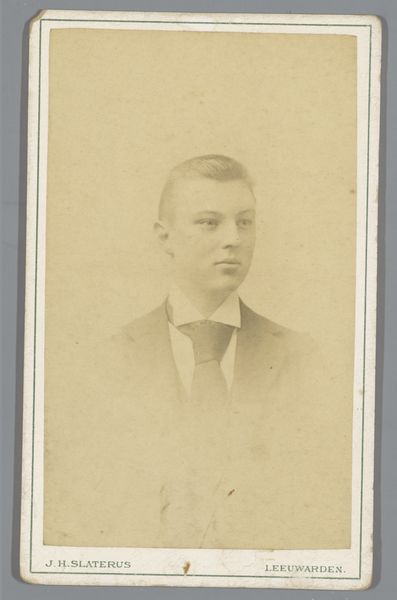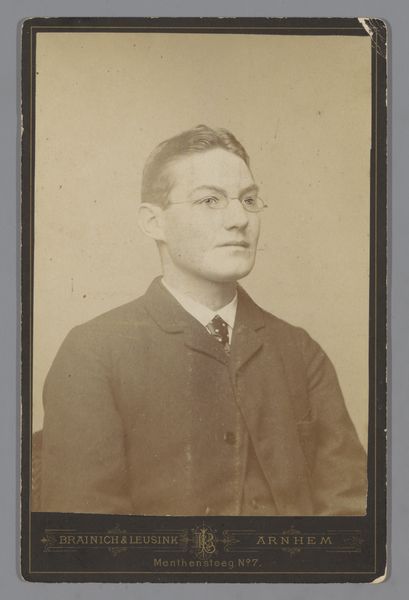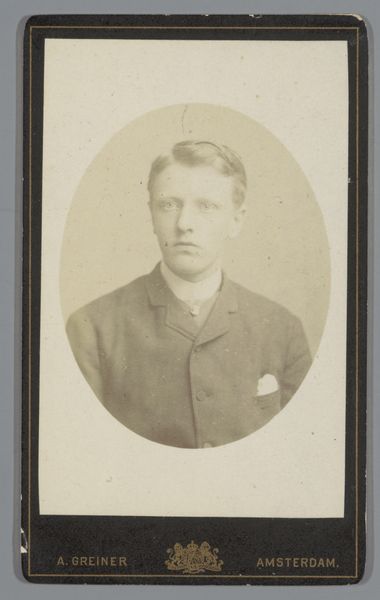
photography, gelatin-silver-print
#
portrait
#
aged paper
#
photography
#
historical fashion
#
gelatin-silver-print
#
paper medium
Dimensions: height 105 mm, width 64 mm
Copyright: Rijks Museum: Open Domain
Curator: Today, we're looking at "Portret van Jacob Kuyn," a gelatin silver print created by Gebroeders IJpma, dating back to between 1894 and 1898. Editor: There's something haunting about this portrait. The stark simplicity, the way his eyes seem to bore right through you, it speaks volumes. It's raw. Curator: Absolutely. In terms of photographic portraiture, it embodies a pivotal era. The IJpma brothers were crafting these formal images when photography was increasingly accessible. Their studio likely catered to the growing middle class in the Netherlands. Editor: And what about Jacob Kuyn himself? I mean, there's this tension, a certain unease I sense. Was it typical for portrait subjects of this era to appear so… unsmiling? Curator: Smiling wasn’t generally the convention for formal portraiture in the late 19th century, no. Facial expressions were kept somewhat neutral. Societal pressures to appear serious and composed were the standard. Photography also had technical limitations – the need for longer exposure times was also not condusive to big smiles. Editor: So it's less about Kuyn's inner emotional state, and more a reflection of societal expectations regarding image presentation? Did his social standing play a role in this controlled, seemingly constrained depiction? The stiff clothing perhaps signals his access to particular societal circles, to certain levels of influence or power? Curator: Exactly. Everything from the subject's posture to the studio backdrop reflects a very specific social script, one emphasizing decorum and respectability. Jacob's suit and tie mark him as someone aspiring to— or already part of— a certain middle class. But the context of that "respectability" needs unpacking; What did it cost certain members of society to have access to resources or visibility during this time? Editor: A question indeed: the costs of inclusion are never equally distributed, right? Looking at it that way reveals something so much deeper here than a simple portrait, opening avenues to critical investigation. Thank you. Curator: Of course, it is a powerful way to contextualize such a find, and opens the viewer to consider a whole myriad of issues for consideration!
Comments
No comments
Be the first to comment and join the conversation on the ultimate creative platform.
